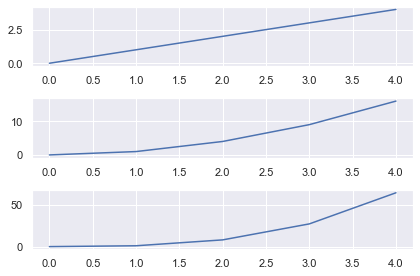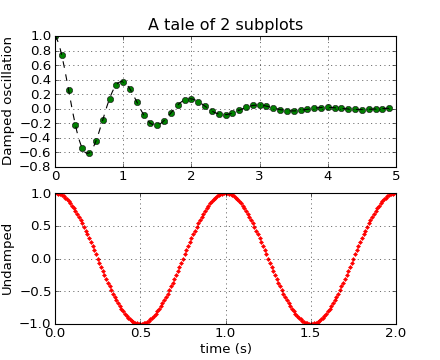
- #ADD SUBPLOT SIZE MATPLOTLIB HOW TO#
- #ADD SUBPLOT SIZE MATPLOTLIB SOFTWARE#
- #ADD SUBPLOT SIZE MATPLOTLIB CODE#
This returns the following image: Changing the DPI of a Matplotlib Figure Let’s change our DPI to 200 pixels per inch: # Changing the DPI of a Matplotlib Chart In order to mofidy this, you can use the dpi= parameter on the figure object. By default, Matplotlib uses a DPI of 100 pixels per inch. In order to finely tune your printable reports, you can also control the DPI of the charts your produce. Matplotlib allows you to prepare print-friendly reports. This can be done by multiplying a value in inches by 2.54 to calculate it in centimeters. If you’re more accustomed to working with centimeters, you first need to convert the measurement to centimeters. We passed in a tuple containing the width and the length in inches.
#ADD SUBPLOT SIZE MATPLOTLIB CODE#
In the code above, we assigned the figsize= parameter in order to specify the size of the figure we want to use. In the code above, we accessed the Figure that was created by default.

This returns the following image: Using figsize to Change Matplotlib Figure Size Let’s take a look at how we can do this: # Changing the figure size using figsize= Because of this, we first need to instantiate a figure in which to host our plot. As the name of the argument indicates, this is applied to a Matplotlib figure. One of the simplest and most expressive ways of changing the plot size in Matplotlib is to use the figsize= argument. show() method to display the visualizationĬhanging Plot Size in Matplotlib Using figsize

#ADD SUBPLOT SIZE MATPLOTLIB HOW TO#
We’ll be using a simple plot for this tutorial, in order to really focus on how to change the figure size of your plot in Matplotlib. To follow along with this tutorial line by line, copy and paste the code below into your favourite code editor. Changing Plot Size in Matplotlib Using rcParams.Changing Plot Size in Matplotlib Using set_figheight and set_figwidth.Changing Plot Size in Matplotlib Using figsize.We will look at one such feature here: figures that consist of two or more subplots. The even better news is that there is far more that matplotlib has too offer. I can’t tell you how frustrating it is to review scientific papers that include spreadsheet generated low resolution charts that are blurred and unclear. Secondly, matplotlib allows you to produce high resolution images for publication. Constrast that to spreadsheets that are notoriously opaque. The open workflow is excellent for finding mistakes and refactoring.
#ADD SUBPLOT SIZE MATPLOTLIB SOFTWARE#
Python is easy to share with other people regardless of their budget, location, career stage or software skills. The first is that matplotlib code is python code so its reproducible and verifiable.

You might argue, what is the advantage of this over charts produced by my favourite spreadsheet program? I forgive you for thinking this, but I’d like to point out that even in the simple plots we have generated there are a couple of subtle, but important differences. So far we have looked at relatively simple maplotlib plots.


 0 kommentar(er)
0 kommentar(er)
